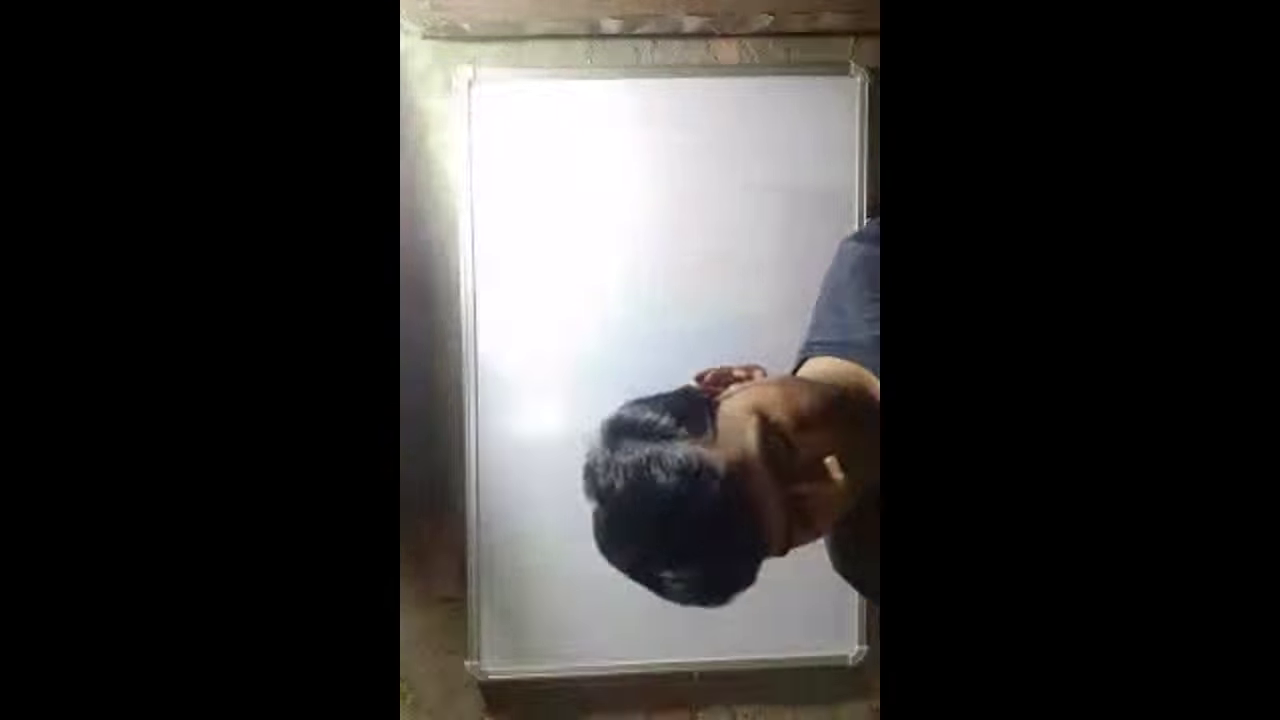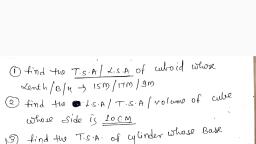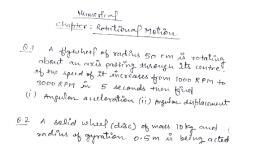Question 1 :
If a particle moves in a closed path with a constant speed of 10 m/s, we can always say, that there will be a change in velocity. 
Question 2 :
If the displacement of an object is proportional to square of time, then the object moves with<br/>
Question 3 :
A particle of mass 3 kg moves under the force of $4\hat{i}+8\hat{j}+10\hat{k}$ N. If the particle starts from rest and was at origin initially. Its new co-ordinates after 3 seconds is :
Question 4 :
A force of $100\ N$ acting on a body for $5$ second gives it a velocity of $20\ m\ s^{-1}$. Calculate the mass of the body.
Question 5 :
The total energy of a particle that moves along a circular path in vertical plane is:<br/>
Question 6 :
A stone tied to a string is whirled in a circle. As it is revolving, the rope suddenly breaks.Then :
Question 7 :
A particle is acted upon by a force of constant magnitude which is always perpendicular to the velocity of the particle The motion of he particle takes place in a plane It follows that ________
Question 8 :
A car accelerates on a horizontal road due to the force exerted by
Question 9 :
A car starts from rest and accelerates uniformly over a time of 5.21 seconds for a distance of 110 m. Determine the acceleration of the car.
Question 10 :
In the equation of motion, $S = ut + 1/2 at^2$, S stands for
Question 11 :
Two cars started moving with initial velocities $v$ and $2v$. For the same deceleration, their respective stopping distances are in the ratio
Question 12 :
A body takes 't' seconds to reach the maximum height 'H' m , when projected vertically upward from the ground. Find the position of the body after $\displaystyle\frac { t }{ 2 }$ seconds from the ground in terms ofH.
Question 13 :
If two bodies of different masses $m_1$<i> </i>and $m_2$<i> </i>are dropped from differnet heights $h_1$<i> </i>and $h_2$<i>, </i>then ratio of the times taken by the two to drop through these distances is
Question 14 :
A ball is dropped from a height of $19.6m$. The distance covered by it in the last second is <br>
Question 15 :
Two cars A and B move such that car A moving with a uniform velocity of $15\ ms^{-1}$ overtakes car B starting from rest with an acceleration of $3\ ms^{-2}$. After how much time do they meet again?<br/>
Question 16 :
A body is projected vertically upward with an initial velocity $u$. If acceleration due to gravity is $g$, the time for which it remains in air, is
Question 17 :
A ball released from a height $h$, touches the ground in $t$ seconds. After $t/2$ seconds since dropping, the height of the body from the ground is :
Question 18 :
An object is thrown vertically upward with a speed of $30m/s$. The velocity of the object half a second before it reaches the maximum height is
Question 19 :
<i></i>A body starts from rest with a uniform acceleration of 2m/s$^2$ for 10 sec , with moves with constant speed for 30 sec then decelerates by 4 m/s$^2$ to zero . What is the distance covered by the body?
Question 20 :
A force 100 N acts in a body mass 2 kg for 10 s. The change in the velocity of the body is :<br>
Question 22 :
A particle starts from rest with constant acceleration for $20$ sec. If it travels a distance $y_1$ in the first $10$ sec and a distance $y_2$ in the next $10$ sec then?
Question 23 :
A particle is thrown vertically up with speed $u$ so that distance covered in last second of flight is $35 m$. If $g = 10\,m/{s^2}$ then initial speed of throw is 
Question 24 :
What is the minimum height above the ground at which the rocketeer should catch the student?<br/>
Question 25 :
Find the average acceleration between points A and B at an angular separation of $60^{\circ}$<br>




































